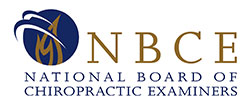Part II Test Plan
General Diagnosis
- Case History (12%)
- Vital Signs (6%)
- Head and Neck Examination/Findings (9%)
- Eye
- Ear
- Nose and sinuses
- Mouth and throat
- Neck
- Thorax Examination/Findings (including heart and lungs) (8%)
- Inspection
- Auscultation
- Percussion
- Palpation
- Abdominal Examination/Findings (8%)
- Inspection
- Auscultation
- Percussion
- Palpation
- Rectal and Male Urogenital Examination/Findings (6%)
- Diagnosis or Clinical Impression (40%)
- Eyes, ears, nose and throat
- Respiratory diseases
- Cardiovascular diseases
- Blood and lymphatic diseases
- Gastrointestinal diseases
- Genitourinary diseases
- Endocrine and metabolic disorders
- Immunological disorders
- Nutritional disorders
- Infectious diseases
- Laboratory Interpretation (11%)
- Urinalysis
- Hematology
- Chemistry/serology
- Special studies
NEUROMUSCULOSKELETAL DIAGNOSIS
- Case History (18%)
- Posture and Gait Assessment (10%)
- Orthopedic Examination (21%)
- Cervical spine
- Thoracic spine
- Lumbar spine and pelvis
- Extremities
- Neurologic Examination (21%)
- Cranial nerve/CNS testing
- Motor testing
- Sensory testing
- Reflex testing
- Superficial reflexes
- Deep tendon reflexes
- Pathological reflexes
- Diagnosis or Clinical Impression (30%)
- CNS disorders
- Peripheral neurologic/neurovascular disorders
- Muscular disorders
- Bone and joint disorders
DIAGNOSTIC IMAGING
- X-ray Technology (10%)
- Physics and principles
- Quality assurance
- Radiographic imaging
- Radiologic protection
- Radiographic Positioning and Normal Anatomy (20%)
- Spine and pelvis
- Extremities
- Thorax and abdomen
- Imaging Diagnosis or Clinical Impression (48%)
- Congenital anomalies and normal variants
- Trauma
- Arthritides
- Tumors/tumor-like processes
- Nutritional, metabolic and endocrine conditions
- Hematologic conditions
- Infectious conditions
- Miscellaneous skeletal conditions
- Thoracic and abdominal conditions
- Methods of Interpretation (10%)
- Biomechanical analysis/mensuration procedures
- Imaging evaluation (including common misinterpretations)
- Clinical Applications of Special Imaging (12%)
- MRI
- CT
- Miscellaneous
PRINCIPLES OF CHIROPRACTIC
- The Chiropractic Paradigm (23%)
- Core concepts
- Research principles and methods
- Concepts of Subluxation and Spinal Lesions (26%)
- Dysafferentation (proprioceptive insult) / somatosomatic reflex models
- Neural compression/traction models
- Visceral reflex models
- Vascular insufficiency models
- Axonal aberration/trophic models
- Neuroimmunomodulation models
- Biomechanical models
- Other
- Basic Science Concepts in Chiropractic (25%)
- Anatomical
- Pathophysiological
- Biomechanical
- Applied Chiropractic Principles (26%)
- Subluxation etiologies
- General effects of adjustment and manipulation
- Wellness
CHIROPRACTIC PRACTICE
- Spinal Analysis and Patient Evaluation (25%)
- Case history and observation findings
- Manual examination of the spine and extremities
- Diagnostic procedures
- Chiropractic Adjustive Technique (26%)
- Cervical techniques
- Thoracic techniques
- Lumbar techniques
- Pelvic techniques
- Costal and extremity techniques
- Patient Care (27%)
- Case management
- Contraindications for treatment
- Home care, prevention and rehabilitation
- Community Health and Wellness (12%)
- Public health organizations
- Healthy People initiatives
- Screening activities for health promotion
- Tobacco, alcohol and substance abuse
- Exercise and healthy diet for obesity
- Behavior theories and lifestyle change
- Wellness counseling
- Occupational and Environmental Health (10%)
- Work-based health risks
- Worker protection and ergonomics
- Injury and violence
- Impact of environment on human health
- Pollution and wastes
ASSOCIATED CLINICAL SCIENCES
- Geriatrics (15%)
- Anatomic and physiologic process of aging
- Geriatric disorders and case management
- Dermatology (11%)
- Types of skin lesions
- Microbial infections
- Tumors
- Dermatitis
- Scaling diseases
- Vesicular and bullous diseases
- Pigmentary disorders
- Inflammatory reactions
- Disorders of hair follicles and sebaceous glands
- Sexually Transmitted Diseases (8%)
- Gonorrhea
- Syphilis
- AIDS
- Chlamydia
- Herpes
- Other
- Toxicology (10%)
- Pharmacology
- Poisoning
- Environmental and occupational toxicology
- Emergency Procedures (13%)
- Cardiopulmonary arrest
- Poisoning
- Thermal injuries
- Shock
- Head and spinal injuries
- Choking
- Fractures, dislocations, strains and sprains
- Other
- Psychology (11%)
- Theories and general concepts
- Mental and emotional disorders
- Assessment methods and case management
- Gynecology and Obstetrics (11%)
- Gynecological examination
- Breast examination and disorders
- Gynecological disease and abnormalities
- Pregnancy
- Labor and delivery
- Postpartum
- Obstetric disorders
- Pediatrics (14%)
- Care of newborn
- Growth and development
- Congenital disorders
- Childhood infectious diseases
- Pathological conditions and childhood injuries
- Emotional disorders and learning disabilities
- Nutritional problems
- Jurisprudence, Ethics and Basic Economics (7%)
Apply→Get Approved→Pay→Schedule
Your Application Process Starts Here
Apply
Where Can I Take The FCLR Exam?
The NBCE offers FCLR at Prometric Testing Centers throughout North America.
After completing your application, you will then proceed to the scheduling section of the application.
How To Register At The Test Site
- ARRIVE EARLY. If you arrive late to an exam, you will not be admitted. Your exam fee(s) will be forfeited and you will need to reapply for another administration date.
- At registration, you must show one form of identification, which must be a valid government-issued photo ID. NOTE: A Digital ID will not be accepted. If your ID is expired, you will not be able to test - funds will be forfeited. After ID has been renewed, you will need to reschedule and pay for another administration.
When Will I Get My FCLR Score? What Is The Passing Score?
Within two weeks following the exam, the NBCE will post your score to your MyNBCE account. You will not receive scores at the testing center.
The Florida Board of Chiropractic Examiners requires a passing score of 75%. If you score below 75%, you will be required to retake the examination. You can apply to retake the exam at your earliest convenience.
Fees
The fee for the Florida Chiropractic Laws and Rules Exam (FCLR) is $95.
If you receive a failing score on FCLR, the retake fee is $95.
